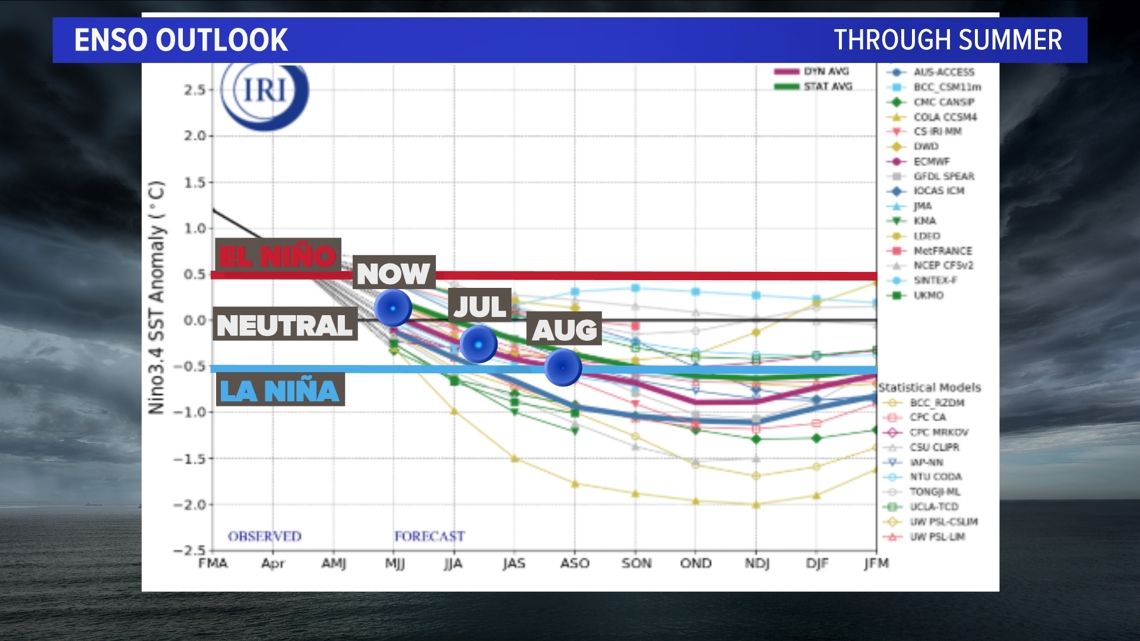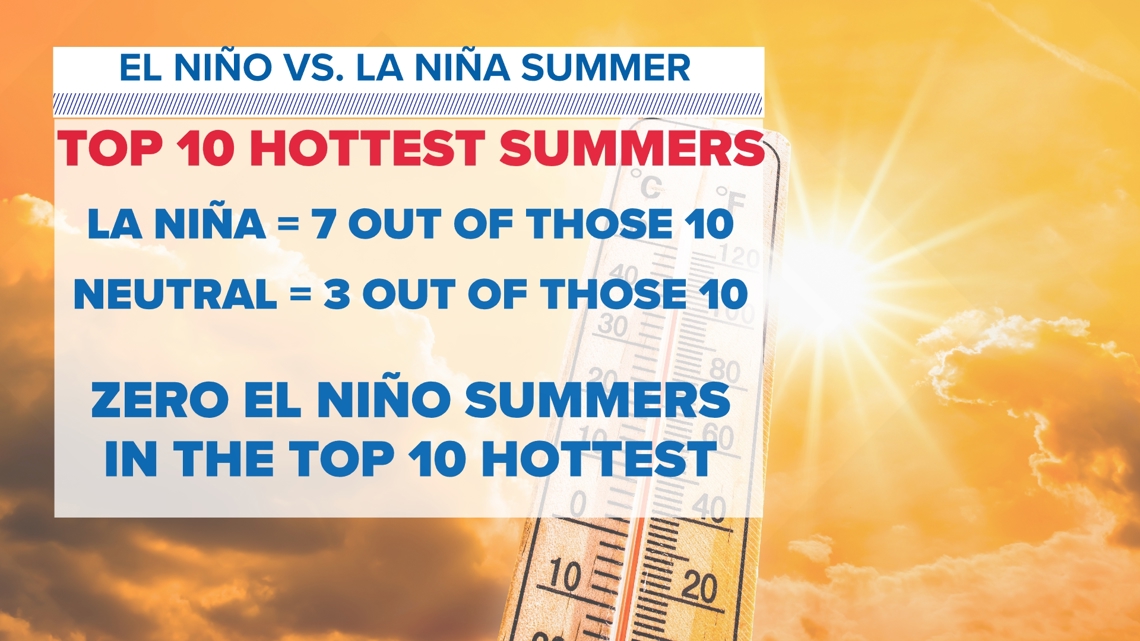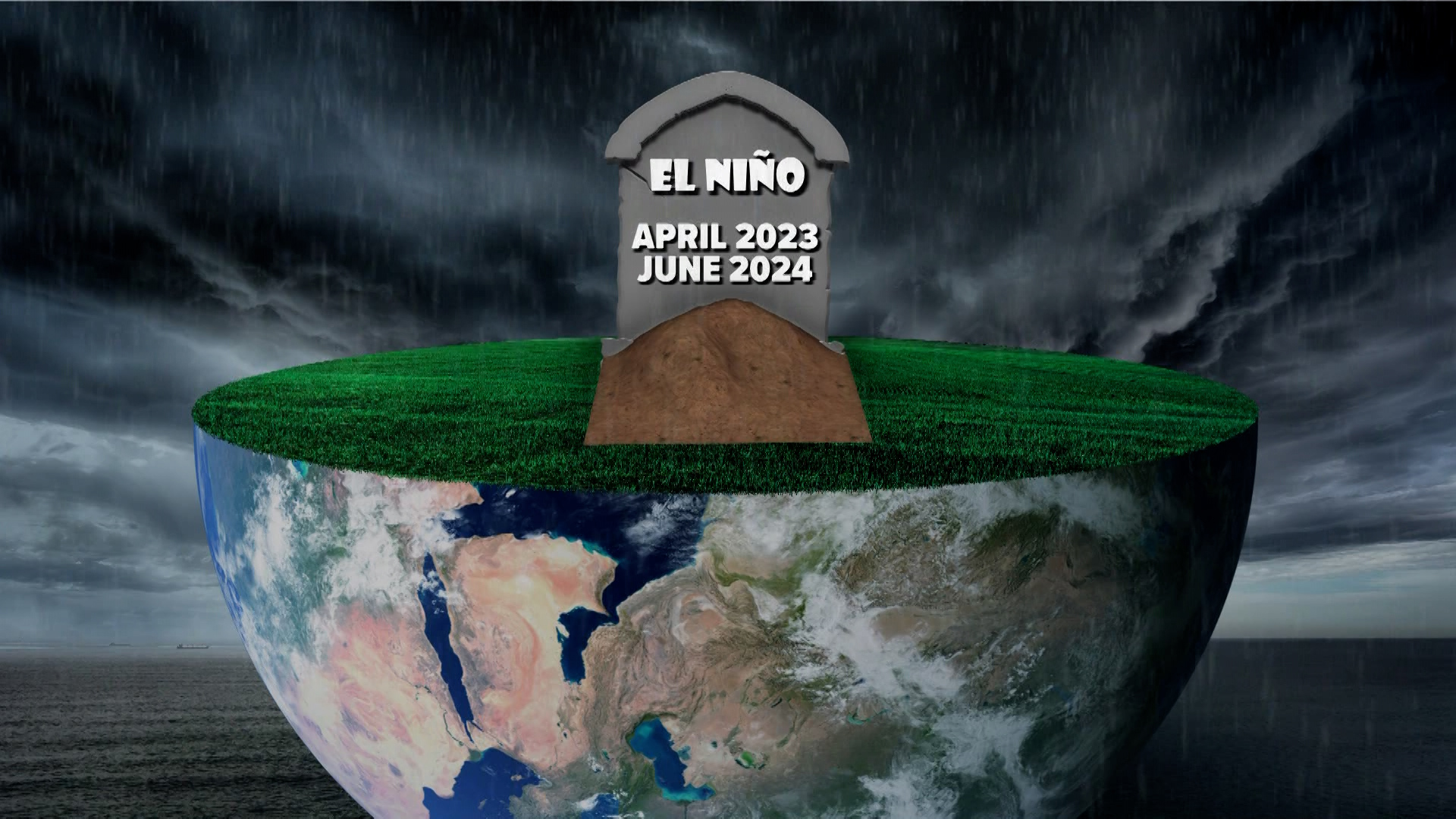DALLAS — Be sure to download the WFAA app to track the latest forecast and get alerts from our team.
El Niño is DEAD!
Since the spring of 2023, we've experienced El Niño conditions, but that just changed Thursday.
We talk A LOT about El Niño and La Niña. Let's define what we're looking at first: El Niño is a warmer-than-normal area of sea surface temperatures in the central Pacific.
La Niña is just the opposite with cooler than normal temps in the same area. Each phase can play a role in global weather patterns including right here in North Texas.
The latest look at temperatures in the central Pacific shows cooling temps and now a "neutral phase." We call this ENSO Neutral. This cooling is expected to continue into the fall and winter and bring us into La Niña sometime between July and September. It's likely to continue through the winter.


A La Niña Watch has been issued as temperatures as a result. As ENSO-neutral conditions prevail, the likelihood of transitioning to a La Niña phase by July-September is high (65% chance), with an 85% probability of La Niña persisting into the winter of 2024-25.
What does this mean for the North Texas summer?
While La Niña winters are typically associated with below-average temps and increased precipitation for us in North Texas, the summer months – not so much.
During a La Niña summer, North Texas may experience above-average temperatures and near-normal precipitation patterns. This could lead to another hotter-than-normal summer for North Texas. In fact, most of the hottest summers on record are La Niña summers. This DOES NOT mean we expect a record-breaking summer. It just means hotter than normal is more likely than not.


What about the winter?
Looking ahead to the winter season, North Texas can expect a better chance for cooler and wetter than normal conditions. We historically see rainier winters, but not necessarily snowier ones when La Nina is present. We will update that forecast much later when we approach winter.
Disclaimer:
El Niño and La Niña are NOT the only piece of the puzzle. They only bring a small tilt in the odds for/against the temperature and precipitation anomalies.

